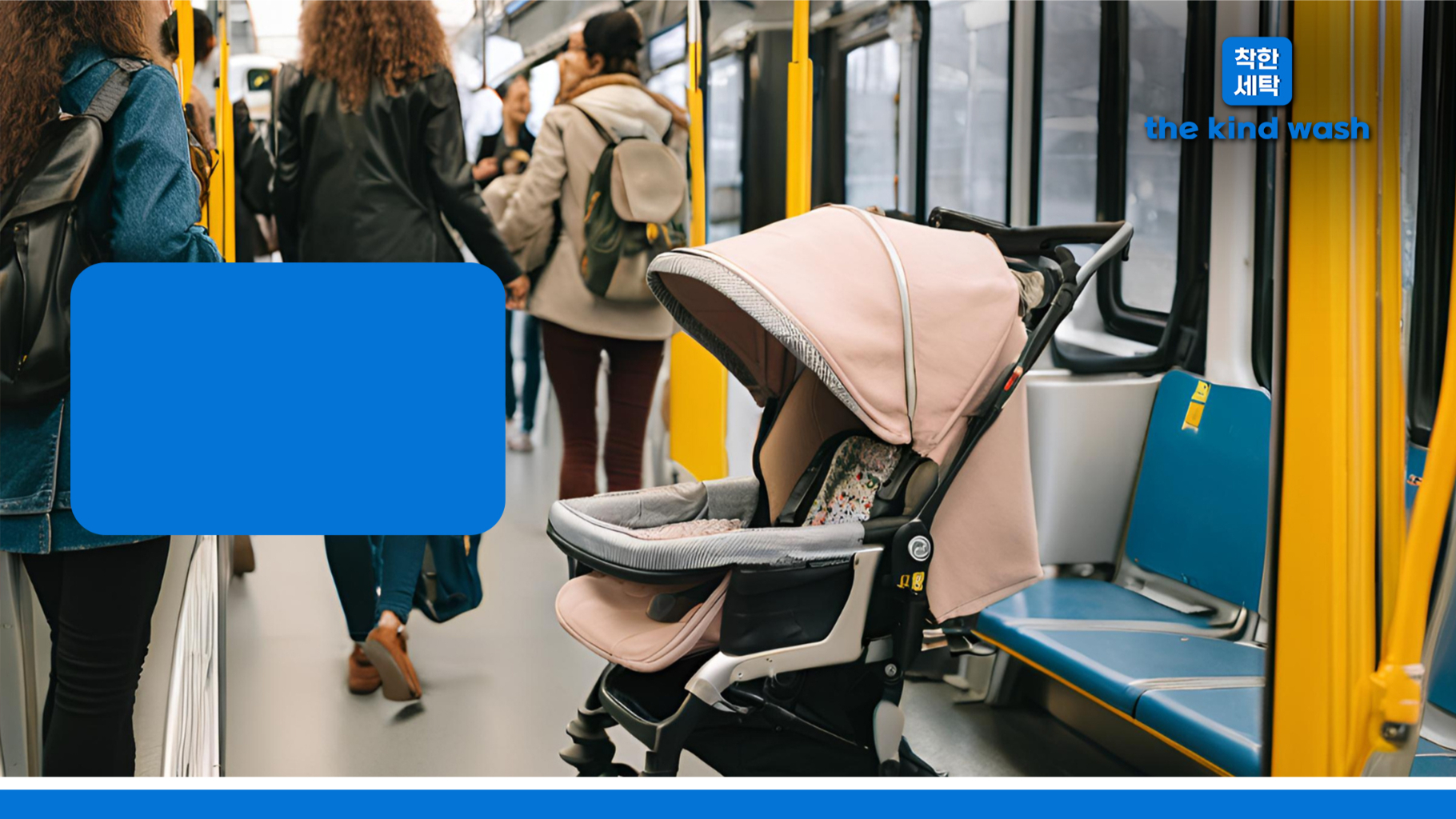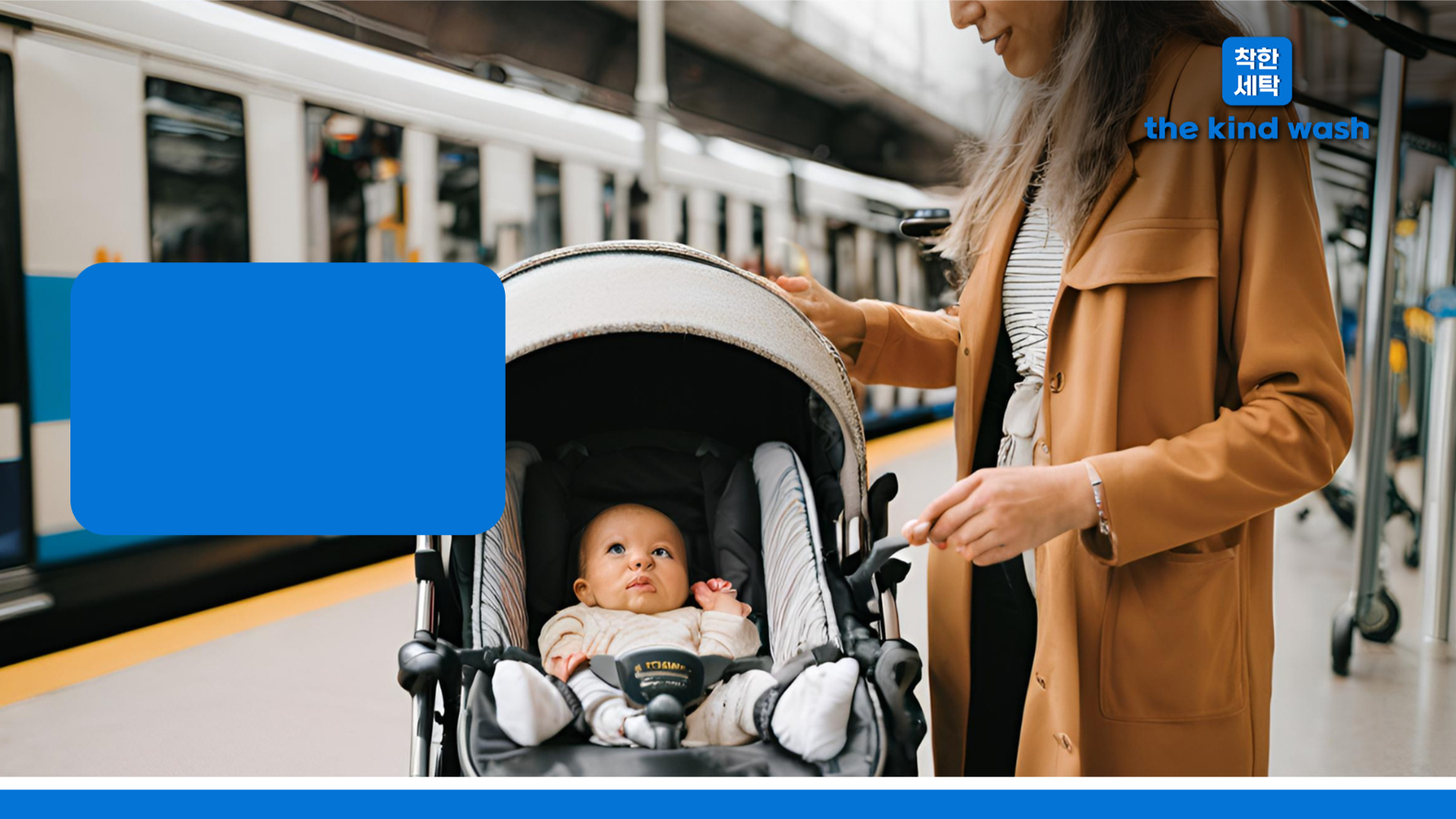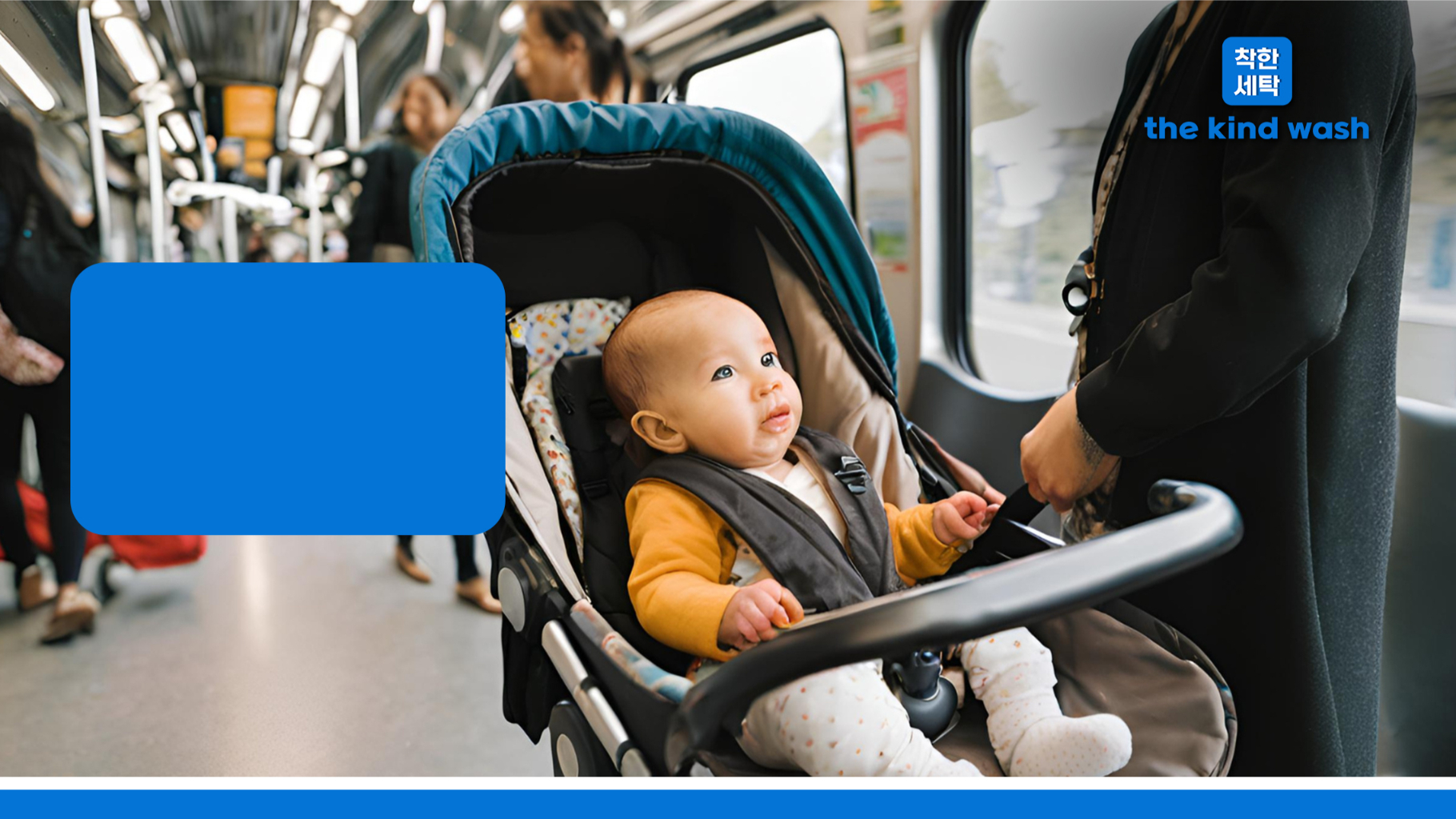Getting around in Singapore with a baby can be quite challenging. Using a stroller for a baby on public transport can be a huge challenge, whether you are going to the doctor, friends, or just out and about in the city. the kind wash notes a few tips to help your trip smoother:
Equipped with an accessible and efficient public transport system, Singapore unleashes convenience for parents on-the-go as it offers a reliable and no-fuss roaming experience with strollers in tow.
On another note, Singapore has a highly developed transport network that is mostly stroller-friendly, but being well prepared is the key. And knowing how to take the bus and train with a stroller can allow for safety and comfort for you and your child.
Whether it’s timing your trips or handling your stroller on busy trains, there are numerous factors for how an outing can go from chaotic to a breeze. Even so, when you have the correct tips, it is possible to glide via the metropolis extra assuredly and make you and the young children have a relaxed and secure ride.
This guide covers some practical tips for taking public transport with a baby stroller in Singapore so that parents can be assured to travel around with the accessible mass transit options that Singapore has to offer. This information will further guarantee that each trip with your child is as simple and safe as it might be.
Understanding Public Transport Systems in Singapore
The public transport system in Singapore is known to be one of the most efficient and reliable in the world, therefore making it very easy for parents using prams or strollers to get around the city itself. The two primary transport modes, namely the Mass Rapid Transit (MRT) and public buses, are family-friendly.
The MRT, which has a web of train lines that covers almost all areas of the island. Designed around critical accessibility, stations include elevators and ramps to facilitate smooth travel for stroller passengers. And most MRT also provide ample space for parents to comfortably board and alight with their babies in tow.
Singapore has come a long way in making buses stroller-friendly. Not every bus allows an open stroller, but most newer buses and designated spots for strollers usually allow your stroller to sit during your ride.
To enhance accessibility, some buses have low floors and ramps to support parents rolling on and off the bus with strollers with relative ease.
If you’re traveling with infants, Singapore’s taxis are another convenient option besides MRT and buses. It can be helpful to have a taxi where there is space for a folded stroller, as public transport can be quite compact. If you plan to travel with a baby stroller, glance out for bigger cars, which are offered as a household alternative using apps like Grab.
Singapore has then had its own policies and infrastructure, helping to create a more inclusive public transport system that allows families with young children to travel safely and with comfort.
That said though, knowing which modes of transport are suited to your trip can help you get your journey planned. Understanding what makes MRT stations, buses, and taxis stroller-friendly can save you some unnecessary trouble and perhaps help you have more enjoyable outings with your little ones.
Thanks to its easy accessibility and well-planned nature, Singapore’s public transport system becomes a stroller-friendly place for every family. From a speedy visit around the city to more drawn-out trips, knowing the intricacies of the system will enable you to feel certain about making tracks in an opposite direction from home all over Singapore.
Essential Tips for Using Baby Strollers on Public Transport
While it is possible to travel with a baby stroller on public transport here in Singapore, it is important to be prepared to have a safe and smooth journey. Probably the most significant suggestion is to prepare your route beforehand.
In general, MRT stations and buses in Singapore are stroller-friendly, but some stations only have escalators, or they can be quite crowded during rush hour. Apps such as MyTransport or Google Maps can point out which stations have lifts and accessible entrances. This makes traveling with a stroller during peak hours, when public transport is overcrowded, very difficult and stressful as well, so planning your trip during off-peak hours can make navigating with a stroller super easy.
This is the most important thing when going somewhere with a stroller, especially when traveling by bus or train. Make sure your stroller has functional brakes and always use them, and strap your infant into the stroller with the provided harness. on buses, whenever the vehicle is moving, and thus the stroller wheels need to be locked since it will move a lot with a risk of falling.
Take elevators instead of escalators inside MRT stations to prevent accidents. On board the train, find the section for wheelchair and stroller users for more space and safety.
Those who travel on public buses must know how to enter the bus. Currently in Singapore, most of their buses allow open strollers, but do check if the bus you board has this service.
If you are getting in the bus, it is better to go in backwards with the stroller for stability and to keep your baby in view the whole time, and remember to use the brake on the stroller once in the bus! Likewise, when getting off, be sure to wait for the bus to come to a complete stop before exiting.
Even if you take the MRT, it helps to put the stroller inside the train. Search for those broad doors, the allocated spaces for families and wheelchair users. If these areas are full, you should try to get as near to the door as possible so that when the time to exit comes you will not be blocked, but do not keep the stroller on the way.
It is important to grip your stroller handle even tighter during the ride alongside a sudden train stop or rush hour.
By following these essential tips, parents can navigate Singapore’s public transport with their little ones safely and comfortably. And with a bit of planning and caution, you’ll see strollers can get through town without the hassle.
Public Transport in Singapore That Supports Baby Strollers
Singapore has gone a long way in ensuring that public transport where parents with baby strollers can access easily and reflect the family-friendly infrastructure in the country. That is the case on the MRT, one of the best public transport systems I have ridden, where nearly every station has wide entry gates, lifts, and ramps, which make it much easier for parents with strollers.
Moreover, trains have dedicated stroller and wheelchair bays at the center of the carriages that can be used safely by families. You will be able to travel anywhere in the city with a stroller because of these stroller-friendly features as part of the transport system.
Public buses have adapted a lot to children with strollers. For a start, not all buses were open to strollers in the beginning, but the other thing being, new buses coming out in Singapore nowadays have an area for strollers where you can set them down without having to fold them. It can be a great help for parents traveling solo with a baby, as it can be quite tough to manage a one-hand stroller with another little one.
Low-floor buses equipped with wheelchair access ramps eliminate the need to lift the stroller onto the bus. Singapore â€â€Ã‚ Singapore’s Land Transport Authority (LTA) has provided mothers with clarity in its guidelines on the use of strollers on buses for smoother travels.
There are public buses displaying clear signage indicating whether they allow open strollers. For those parents unsure if the bus they are about to board is a stroller one, the signage by the bus doors or on the inside of the bus provides a rapid and easy reference.
Further, bus drivers in Singapore are trained to be considerate of parents with strollers, often taking an extra moment or so at a stop to ensure families have enough time to board or alight safely. This extremely high level of attention to detail helps ensure that parents are able to leave home confident with public transport and that they are supported when doing so.
Apart from the MRT and buses, taxis and ride-hailing services are also stroller-friendly. If you take taxis with cars, most of them have boot space for folded strollers, and apps such as Grab even offer larger vehicles designed for families, ensuring more room for both the stroller and other essentials.
These ridesharing services help to offer some more convenience, especially if you are in a place where public transport may not be the most effective option, be it due to the area you are located in or the timings you are looking at.
Singapore’s public transport system: an ongoing work in supporting parents and their small kids with short MRT rides and bus routes packed with babies in strollers more than ever, the city has paved the way to ease travel for you, parents, and your little ones.
How to Properly Care for Strollers on Public Transport
Using Singapore’s public transport with your stroller is a great way to explore the country, but it can do some wear and tear on the stroller, so it is important to take care of your stroller to keep your stroller in shape and your baby safe.
Maintenance is the best way to take care of daily wear and tear from buses and trains. If you are commuting that stroller, here are a few important things to do to care for it:
1. Clean Your Stroller After Every Trip
Dirt, Dust, and Germs in Public Transport. Wipe down your stroller after every journey, paying close attention to the wheels, handles, and fabric.
For surface dirt, a damp cloth and mild cleaner should be sufficient. Cleaning your stroller regularly serves to keep it sanitized for your baby but also prevents dirt and bacteria from festering in it and destroying your stroller in the long run.
Although regular washing is a must, you also have to go for the deep cleaning services by professionals from time to time. the kind wash provides stroller detailing services that go way beyond the regular maintenance.
the kind wash will make sure to sanitize places difficult to access, treat different materials correctly, and provide a deep clean for stubborn stains not reachable by wiping or home fabric solutions.
the kind wash is the expert stroller cleaning service that keeps your pram in top shape so it lasts longer as well as providing a clean environment for your baby. With strollers that are used regularly, think about booking in a professional clean with the kind wash every 3-4 months to ensure maximum cleanliness and protect your baby stroller.
2. Inspect the Wheel Regularly
When you roll a stroller over platforms, get on a bus, or push through a crowd, then the wheels bear the brunt of the wear. After each outing, be sure to check the wheels to ensure they are still working.
Check for wear, cracks, or flattening, and make sure the wheels are not wobbling. Wipe off debris stuck to the wheels if necessary, and lube the wheel axles if you want them to spin freely.
3. Check the Brakes
Stroller safety on public transport with a baby always ensures that the brakes are functioning well before going out. It could be on a bus or on an MRT train; the importance of locking it is crucial to prevent it from moving.
Try out the brakes by pushing down on them and ensuring that the stroller stays in place. If the brakes feel a little slack or do not grab completely, they may be due for a tune-up or professional service.
4. Fold Your Stroller Correctly
In fact, there may be some instances on public transport where you may need to fold your stroller, such as when overcrowded on the bus. While you practice to fold and unfold your stroller, you get to know that you are doing it correctly because you are doing it quickly and correctly at home with proper practice rather than doing it at the mall constantly, which gets annoying.
Over time, forcing or bending parts into position when folding will damage the stroller frame. Make sure to adhere to the best practices provided by the makers to keep your buggy in perfect condition and collapse them with ease.
5. Protect the Fabric and Padding
Using it on public transport can wear off the fabric and padding of your stroller. Regularly clean the fabric with a mild soap and water solution to maintain its newness and avoid placing it in direct sunlight over long periods.
In addition to that, you could use a rain cover or UV shade when you are out since it will help to protect strollers and your baby from damage due to weather. If you take proper care of the fabric, it helps to make the stroller long-lasting, and it will also be comfortable for your baby.
Conclusion
Using your baby stroller on Singapore’s public transport with toddlers is hassle-free and fun as long as you are well-prepared. Parents must learn everything from the MRT and bus accessibility features to the must-know safety tips to get around confidently in the city.
By mapping out your routes ahead of time, utilizing stroller-friendly spaces, and exercising safe stroller-carrying practices, you are sure to enjoy a happy ride together with your baby.
Though it is also important to care for your stroller. It is routine maintenanceâ€â€cleaning (the frame, not only the seat), regular checks on the wheels and brakes, and protecting the fabricâ€â€that will enable your stroller to travel the rigors of public transport several times a week.
Taking good care of your stroller not only increases its lifespan but also provides a safe and comfortable ride for your baby.
The public transport system in Singapore is equipped with family-friendly facilities to make your life that much easier if you have a baby stroller.
With the tips and recommendations outlined in this handbook, parents will be able to fully enjoy the effective transport network in the city without a hassle. Every journey can be seamless, enjoyable, and safe with the right preparation and care.
FAQ
What are the essential safety tips for using a baby stroller on Singapore’s public transport?ÂÂ
Key safety tips include using functional brakes, strapping your infant securely, taking elevators instead of escalators, entering buses backwards for stability, and maintaining a firm grip on the stroller handle during the journey.
Is stroller onboard all the public buses in Singapore?
They often do not allow open strollers, although most newer buses have designated areas for strollers. Check for Signage  Check around the front doors of the bus or on signage inside to indicate if strollers are allowed.
How do I get ready for taking a stroller on public transport?
Chart the route beforehand using apps such as MyTransport or Google Maps if you can hitch a lift near the stations, avoid peak hours if possible, and ensure your stroller is in tip-top condition.
How to maintain a stroller if using public transport regularly?
Maintenance on a regular basis includes: cleaning it after every trip; checking out the wheels for wear and tear; checking that the brakes are functioning correctly; folding properly; and protecting the fabric through regular cleaning and covering with UV protection.
What facilities are available at MRT stations for stroller users?ÂÂ
MRT stations feature elevators, ramps, wide entry gates, and dedicated spaces in train carriages for strollers and wheelchairs.



